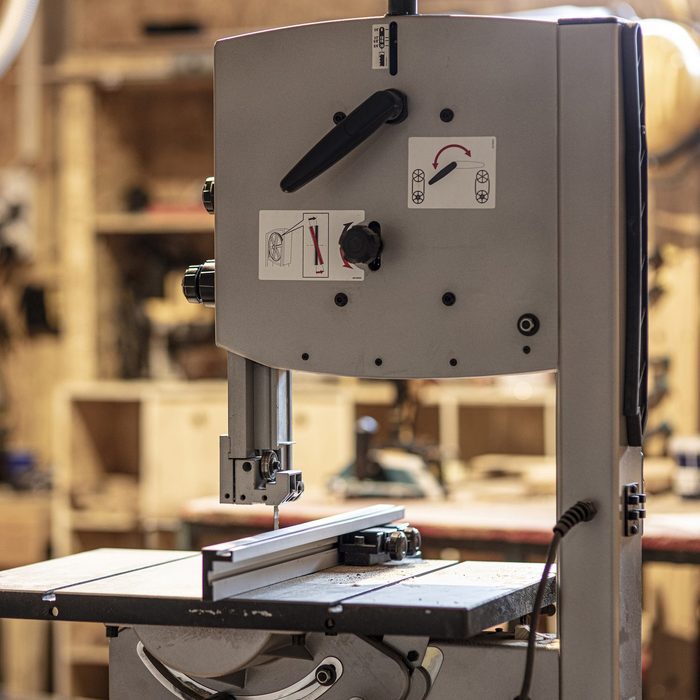
Buying a Band Saw
Band saws are amazingly versatile tools. They’re primarily used for making curved cuts, resawing boards and ripping rough material. They’re also relatively free of kickback because the blade only moves downward, not out toward the user like the blade on a table saw.
Band saws can cut wood, metal and other materials, but they’re most often found in woodworking. Here, we’ll look at great band saws in several sizes and designs.
Some key considerations when choosing a band saw:
- Throat depth. This is the saw’s cutting width, which is how band saws are described. So a 14-inch band saw has about 14 inches of throat depth. (The actual measurement will be smaller, like the way a 2×4 isn’t actually two by four inches.) Throat depth is the distance from blade to column. Bench-top band saws generally have about a foot of throat depth, while standing saws allow wider material to pass through. If you’re cutting curves, that extra space gives you more room to maneuver material.
- Vertical capacity. This measures the saw’s cutting height. It’s the key measure if you’ll be resawing boards into smaller thicknesses.
- Motor power. Smaller bench-top saws don’t always advertise their horsepower (hp). But if they do, 1/2- to 1-hp is plenty for hobbyists. You want 1- to 1-1/2 hp for resawing. A band saw with 2-hp or more is suitable for serious woodworking, but will likely need a 220-volt electrical supply.
- Frame. Traditionally these are cast iron, but steel frames allow for a higher vertical capacity. Cast iron frames often have seams. (We’re primarily talking about vertical band saws here, plus some hand-held models. Horizontal band saws are distinct enough to be a separate topic.)
- Table size. Tables support the cutting material. Some DIYers prefer a wider surface, while others like to be right on top of the work. Some tables also tilt on one or more directions, allowing for easier angled cuts. Portable band saws don’t have tables at all.
- Blades. Like every saw, a band saw is only as good as the blade. Less expensive models often come with a lower quality blade, so you may want to upgrade right away. Pros keep multiple blades on hand to save time and material, while DIYers tend to keep a more limited selection of blades. The best width depends on the usage. If you’re doing a lot of curvy, delicate work, a narrow blade is best; many DIYers like a 1/4-in. blade. Greater width provides more stability for steady straight cuts, often a 3/4-in. blade or greater. A half-inch blade is a good compromise. As with most other types of saw blades, a higher tooth count provides a smoother but potentially slower cut. Manufacturers describe band saw blades by teeth per inch (tpi) rather than full tooth count. Bi-metal blades can cut wood, but are often used for metal.
- Price. This varies with size and quality. Bench top models range from $175 to $1,000 while freestanding floor saws start at around $1,000 and go up to $5,000 or more. A portable band saw is only $100 to $400. Our list includes a few great buys at several price.
- Overall size. We cover three sizes of band saws in this list. Floor-standing saws are the most capable models, but also the most expensive and heaviest; some floor-standing band saws weigh well over 500 lbs. Bench-top models are the most popular with DIYers looking to balance price, size and performance. These range from 75 to 300 lbs. and usually have a smaller throat size and vertical cutting capacity than floor-standing saws. Portable band saws are lightweight hand-held tools, available in corded and cordless models. Notably, portable band saws lack an integrated table to support the work material.
Article source here: The Best Band Saws of 2022

No comments:
Post a Comment